What if someone asks you: what is the most expensive movie in history? Is it 2019's "Avengers: Endgame"? They spent $365 million to shoot and $150 million to promote, for a total of $515 million.
If inflation is taken into account, some might also mention 1963's "Cleopatra", that cost $44 million, which is equivalent to $5.2 billion now.
If truth be told, the most expensive one is a non-Hollywood mega-production that almost allows no latecomers to catch up, the 1966 Soviet version of "War and Peace".
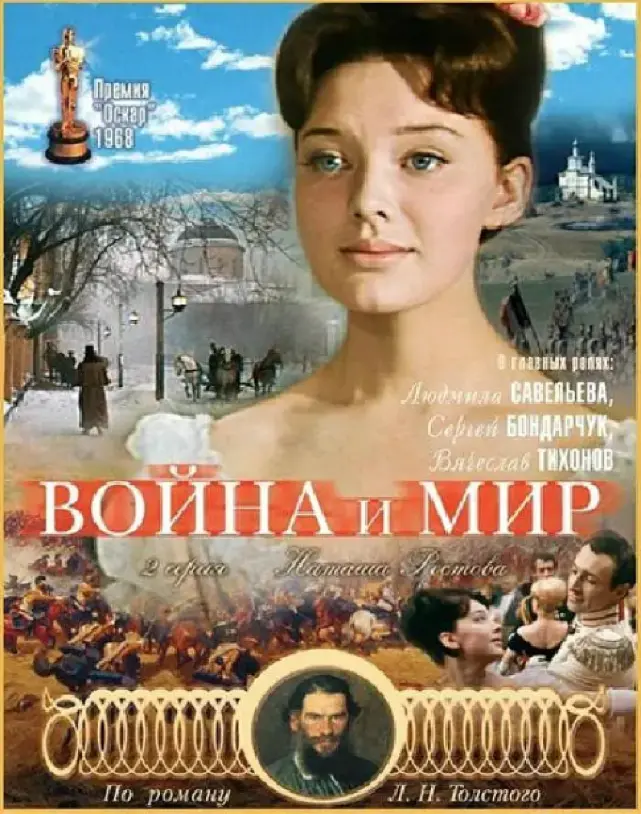
Adapted from Leo Tolstoy's 1869 masterpiece, "War and Peace" was released in 1966 and 1967 in four installments.
In terms of the cost, referring to Wikipedia's records, it is "the most expensive film ever made... it is said to have cost $100 million"; a similar text published by Guinness World Records in 1979, states that "War and Peace" was "the most expensive film ever made" with "an official total cost of over $96 million".
The total length of film used for filming "War and Peace" alone is 1,540 km. 595,193 cast members participate, 36 in important roles and 599 in roles with dialogues. It requires 20,900 sets of costumes, of which 47 factories provide general costumes, and harness and leather products are produced by two factories. 58 museums offer a variety of paintings, furniture, chandeliers, tableware, guns, and other 19th-century lifestyle items that fully recreate the life of the aristocracy of the time. In addition to the museum, private treasures are sent to the crew from the home collections of thousands of Soviets.
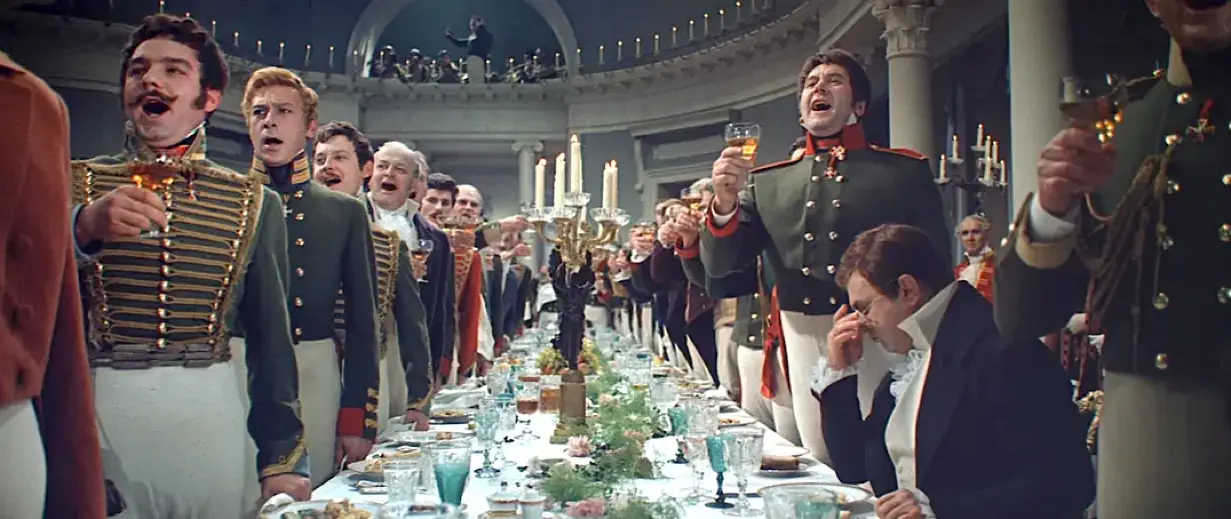
At that time, the Soviet Union prepared 695 French Napoleonic cannons and 587 Tsar cannons, 20 of which come from the museum. More than 30 planes, 40 tons of fuel, 52 tons of gunpowder for smoke, 23 tons of gunpowder for firing, 16,600 hand grenades, 6,600 smoke grenades, and 4,500 fuses were prepared for aerial photography.
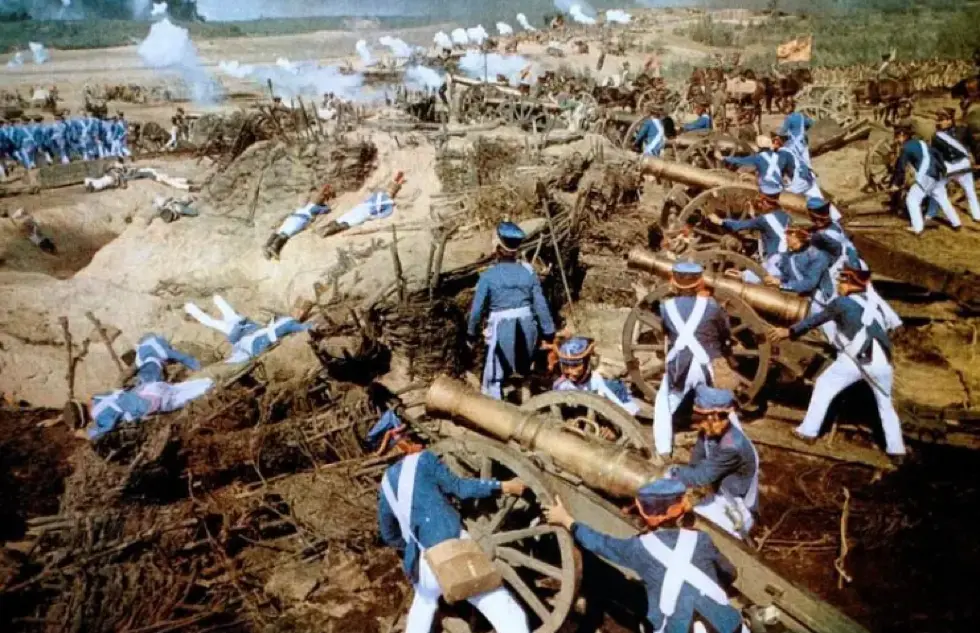
To achieve realistic scenes, the Soviet Union spent two years building a one-of-a-kind filming set. A scene of Moscow covers an area of 100,000 square meters. This includes city streets, residential homes, government institutions, cultural facilities and even a complete Kremlin. Ultimately, the crew, in order to film the Moscow fire, actually sets "Moscow" on fire.
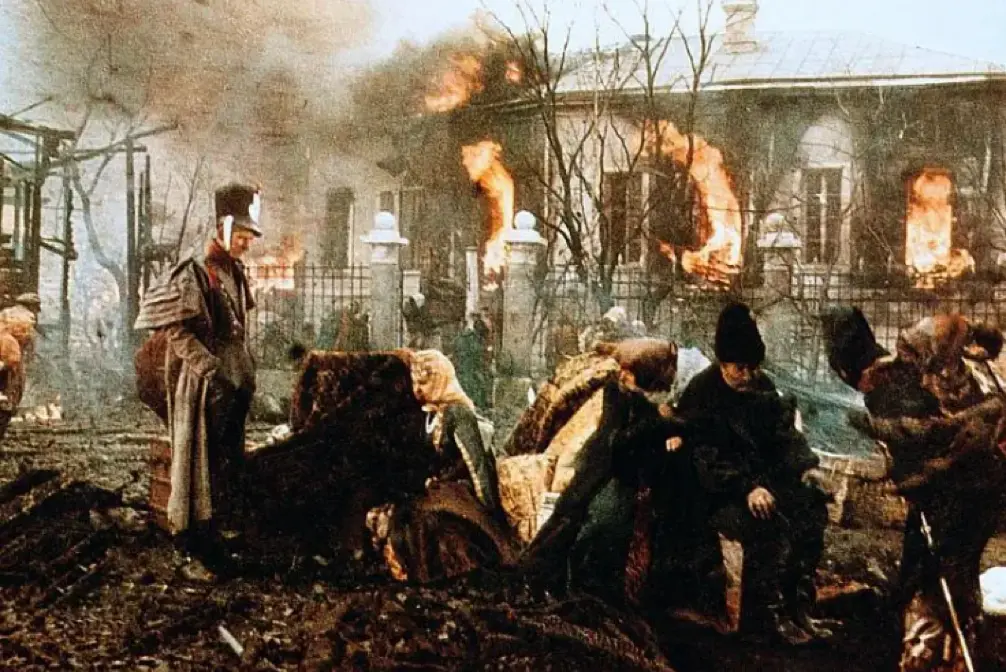
When filming the war scenes of Napoleon's invasion of Russia, the military even tries to replicate the number of troops in the film as close as possible to that of participants in the actual battle. A total of 125,000 people and 35,000 war horses were used, and each "soldier" had weapons and uniforms. Later, it gets recorded in the "Guinness Book of World Records".

Since the filming of "War and Peace" was considered to be an extremely important political task of the Soviet Union at that time, many government agencies and the military participated for free. So the actual cost was far more than what can be seen on the books!
Why did Soviet Union make this film?
In the 1950s and 1960s, Hollywood displayed a keen interest in making epic films and made blockbusters one after another such as "Ben-Hur" (1959) and "Cleopatra" (1963).
The 1956 American version of "War and Peace", directed by King Vidor, stared by Henry Fonda and Audrey Hepburn sweept the entire U.S. box office upon release and later attracted more than 31.4 million viewers to theaters in the Soviet Union.
The phenomenon of so many Soviet people going to see an American-made Russian masterpiece soon drews the attention of the Soviet Communist Party's brass, who instructed the film bureau and the Moscow Film Studio that this should be countered.
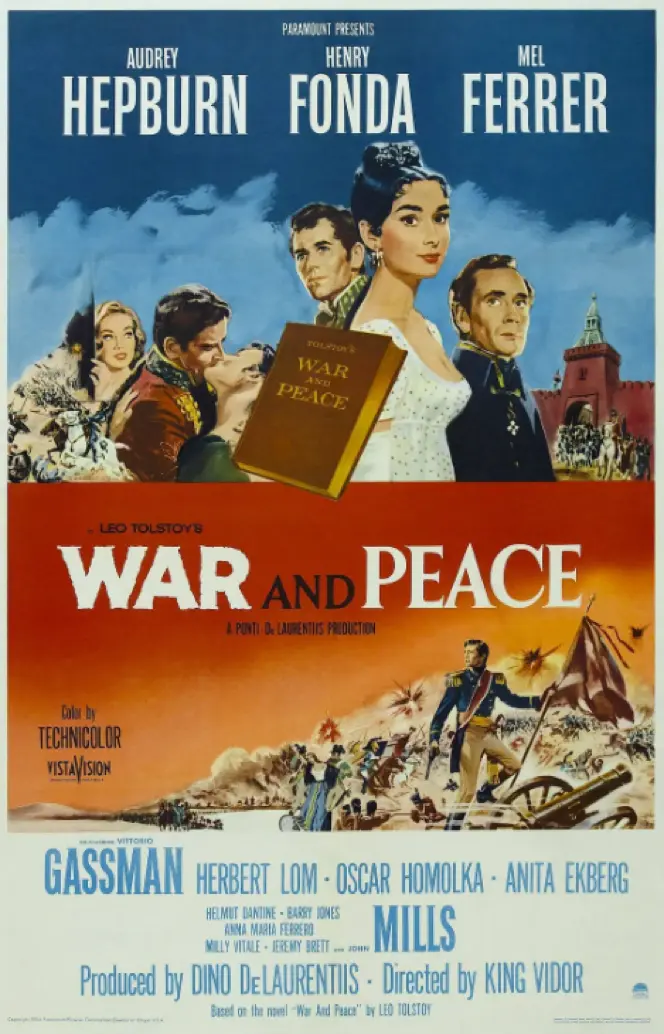
The Soviet version of "War and Peace" can be said to be a product of the Cold War era, when the United States and the Soviet Union fought for supremacy, not only in political and military terms, but also in terms of culture.
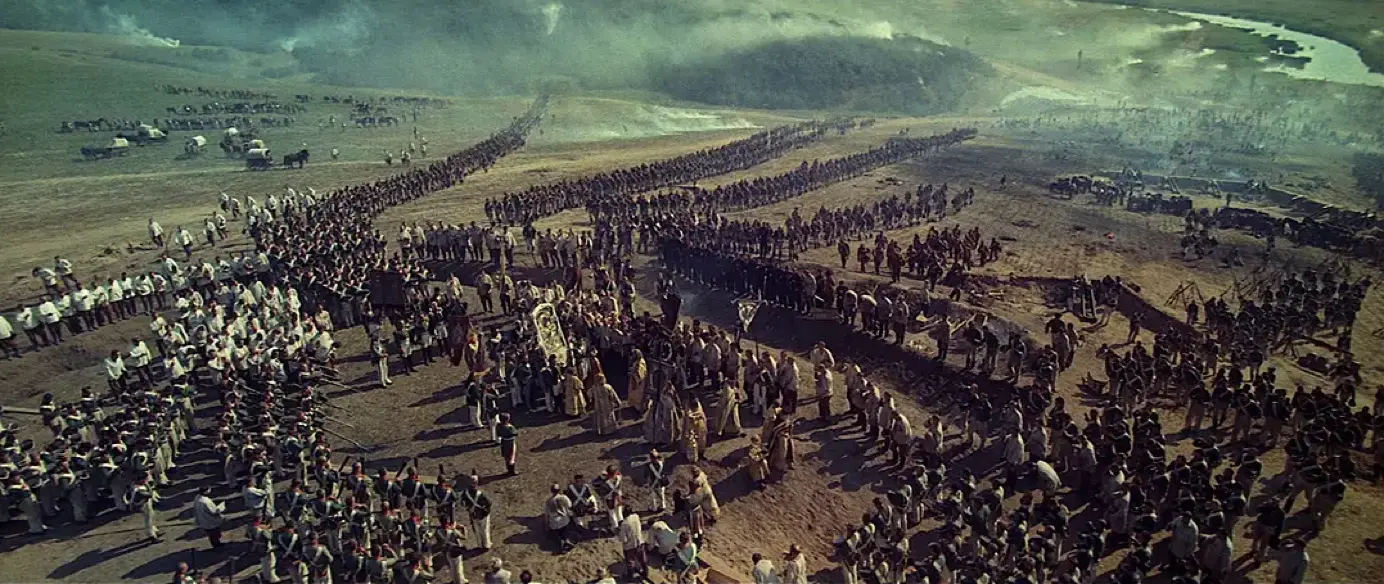
Although literature knows no borders, it was arguably quite humiliating for Soviet filmmakers that the treasures of Russian were taken and filmed by the Americans, and flourished in the Soviet Union.
Just the movie itself, the American version, does not express the original's reflection on the war, but a run-of-the-mill romance. Therefore, the Soviet Union has to make films that are more faithful to the book.
An unprecedented film history masterpiece
It tok Tolstoy six years to compose "War and Peace" during 1863-1869. Coincidentally, the Soviet director Bondarchuk also spent six years filming "War and Peace", and even suffered two heart attacks during the shooting process. Fortunately, all the efforts were worthwhile.
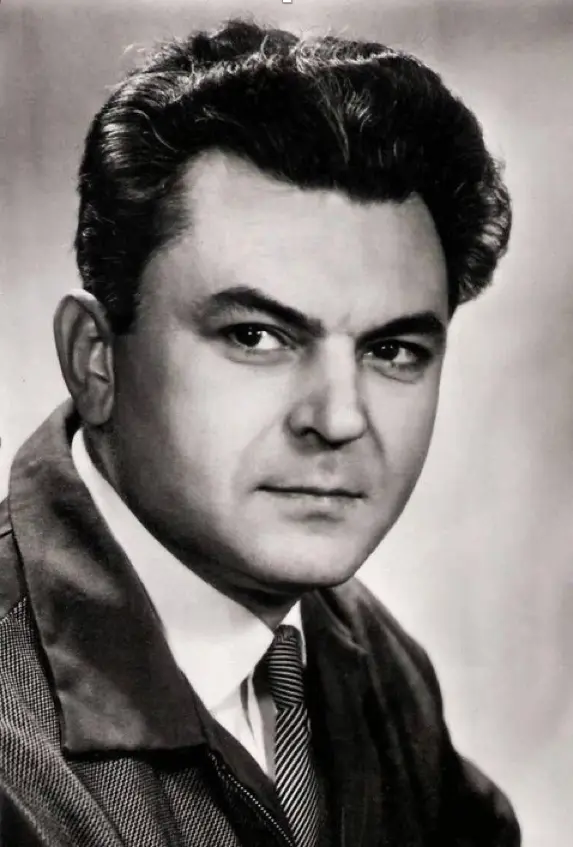
The film, like the novel, divided into four parts of seven hours, was the ultimate in exhaustive detail and the pursuit of authenticity. From the lavish and extravagant balls of the upper class to the bloody battlefields of Borodino; from the snowy and windy Russian winter to the fires and ashes of Moscow fire, each scene was magnificent, perfectly blending the spirit of Tolstoy's original work, recreating the vast historical picture of the Russian land during the Russo-French War.

The Soviet version has a large number of war scenes and excellent characterization. This perfectly restores the style and features of the Russian society at that time, as well as the improvement process of individual personality in the war.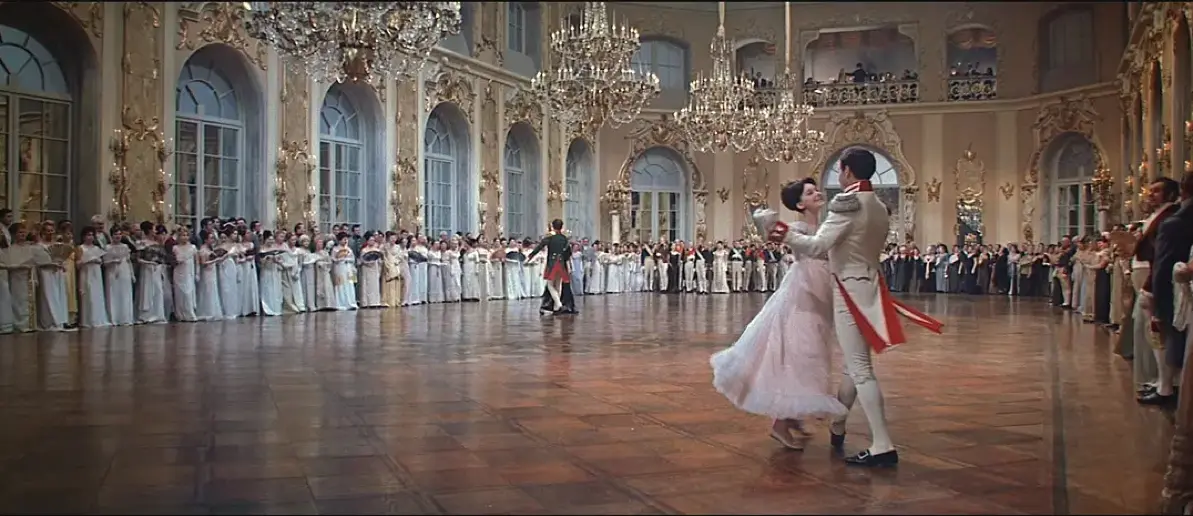
The artistic level reached its peak, and tremendous success followed at the box office. For example, in Japan, the official release in 1969 proved extremely sensational, with hard-to-find tickets and an eventual Japanese gross of $250 million (at the time); Japan later re-released the Soviet version of "War and Peace" in 1971 and the box office remained well sought after.
Not only that, the Soviet version of "War and Peace" was awarded the Academy Award for Best Foreign Language Film in 1969.
The success of the Soviet version of "War and Peace" was an all-Soviet effort, and the actual cost behind it is difficult to measure with specific values. Today or in the future, I am afraid it will be difficult to see a film like this again.


 Log in
Log in

No comments yet,
be the first one to comment!